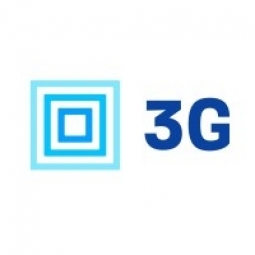公司规模
Mid-size Company
地区
- America
国家
- United States
产品
- Pacejet Shipping Software
- NetSuite
- 3G Pacejet Shipping
技术栈
- ERP
- Shipping Integration
实施规模
- Enterprise-wide Deployment
影响指标
- Productivity Improvements
- Revenue Growth
- Employee Satisfaction
技术
- 功能应用 - 企业资源规划系统 (ERP)
- 功能应用 - 仓库管理系统 (WMS)
适用功能
- 物流运输
- 仓库和库存管理
用例
- 仓库自动化
- 库存管理
服务
- 系统集成
关于客户
Okuma Fishing is a California-based wholesale supplier specializing in sport fishing gear. The company operates in the sporting goods industry and has been experiencing significant growth, necessitating a more robust ERP solution to manage its operations effectively. Okuma Fishing is proactive in its approach, understanding the critical role of ERP-shipping integration in enhancing operational efficiency. The company values its team and individual contributions, as evidenced by its focus on employee growth and retention. Despite challenges posed by the global pandemic, Okuma Fishing has managed to maintain productivity and even increase its order processing capabilities. The company is committed to leveraging technology to drive growth, both in terms of revenue and employee development.
挑战
Okuma Fishing, a California-based wholesale supplier of sport fishing gear, faced challenges in managing its growth effectively. The company needed a more robust ERP solution to handle its expanding operations and selected NetSuite for this purpose. However, understanding the importance of integrating ERP with shipping solutions, Okuma also decided to upgrade its shipping solution to Pacejet. The challenge was not only to streamline operations but also to ensure that the integration of these systems would lead to tangible improvements in processing speed, sales, and employee roles. The global pandemic added another layer of complexity, causing some warehouse attrition, but Okuma was determined to maintain productivity and even increase the number of orders processed despite a reduced headcount.
解决方案
To address its challenges, Okuma Fishing implemented NetSuite as its ERP solution and upgraded its shipping solution to Pacejet. This strategic move was aimed at enhancing operational efficiency and supporting the company's growth trajectory. The integration of Pacejet with NetSuite began in the warehouse, where it significantly reduced process time, allowing customers to receive orders faster and reorder on a shorter cycle. This integration not only improved processing speed but also contributed to a 70% increase in year-over-year September sales. The intuitive nature of Pacejet allowed employees, even those without an IT background, to manage the implementation effectively. For instance, a warehouse packer with no IT background successfully managed the Pacejet implementation, recommending custom workflows tailored to Okuma's needs. This collaboration between software development and logistics experience was instrumental in the successful deployment of the solution. The combination of NetSuite and Pacejet also attracted new talent to Okuma, with the current IT Manager joining the company due to its use of these trusted software solutions. The robust integration of these systems provided Okuma with the confidence to explore new software ideas and connections, fostering an environment of innovation and growth.
运营影响
数量效益

Case Study missing?
Start adding your own!
Register with your work email and create a new case study profile for your business.
相关案例.

Case Study
Hospital Inventory Management
The hospital supply chain team is responsible for ensuring that the right medical supplies are readily available to clinicians when and where needed, and to do so in the most efficient manner possible. However, many of the systems and processes in use at the cancer center for supply chain management were not best suited to support these goals. Barcoding technology, a commonly used method for inventory management of medical supplies, is labor intensive, time consuming, does not provide real-time visibility into inventory levels and can be prone to error. Consequently, the lack of accurate and real-time visibility into inventory levels across multiple supply rooms in multiple hospital facilities creates additional inefficiency in the system causing over-ordering, hoarding, and wasted supplies. Other sources of waste and cost were also identified as candidates for improvement. Existing systems and processes did not provide adequate security for high-cost inventory within the hospital, which was another driver of cost. A lack of visibility into expiration dates for supplies resulted in supplies being wasted due to past expiry dates. Storage of supplies was also a key consideration given the location of the cancer center’s facilities in a dense urban setting, where space is always at a premium. In order to address the challenges outlined above, the hospital sought a solution that would provide real-time inventory information with high levels of accuracy, reduce the level of manual effort required and enable data driven decision making to ensure that the right supplies were readily available to clinicians in the right location at the right time.

Case Study
IoT Solution for Cold Chain
Most of the customer's warehouses run on utility and generator power. Since these warehouses are in remote locations, power outages are a very common scenario. Diesel fuel, thereby, becomes a significant cost for these warehouses. Energy consumption was also very high due to the lack of a consistent temperature throughout the facility. This lack of a consistent temperature in all areas and no way to control it, resulted in the customer losing a significant amount of their temperature sensitive goods due to spoilage.

Case Study
DSV Road levels their workflow and decreases stress thanks to 4 BT Autopilots
During peaks in the workflow employeescan experience stress which makes them prone to causing damage. Avoiding these peaks also eliminates the need to hire temporary workers that require extra time and costs for education.

Case Study
Hardware Retailer Uses Data Warehouse to Track Inventory
Ace tracked which products retailers ordered, when they were ordered and shipped. However, the company could not track or forecast actual sales. Data used for reporting was up to a one-week old, owing to performance and data cleansing issues. Requirement to integrate wholesale and inventory data with POS data to help drive key business decisions, improve category management, lower inventory costs and optimize pricing. Reliance on custom coding to integrate POS data was excessively resource intensive and led to major performance constraints.









